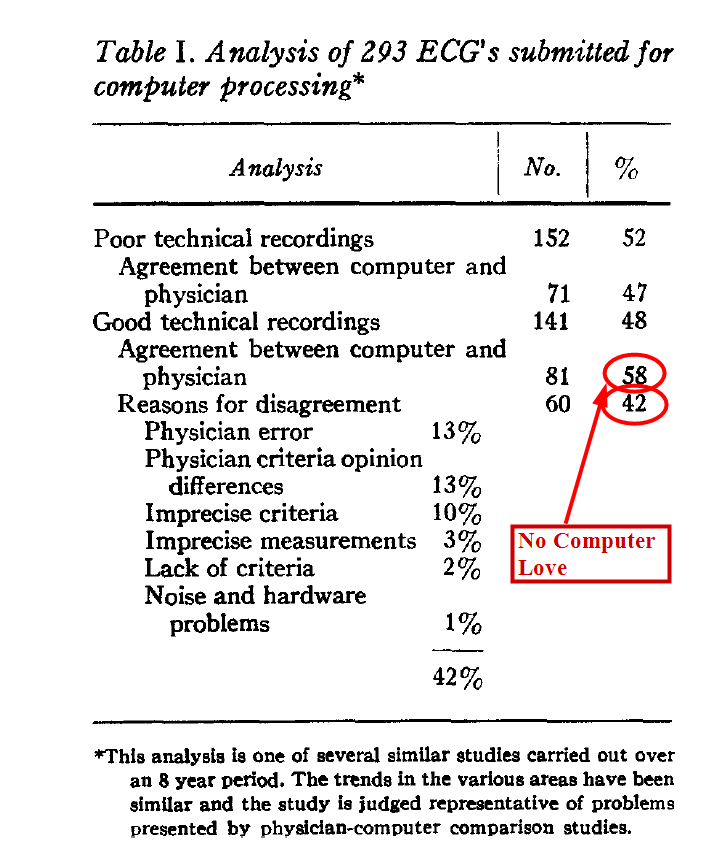Performance of the computer and physician in the analysis of the electrocardiogram
- Caceres, C. A., & Hochberg, H. H.
- American Heart Journal, 79, 439-443
- A version of the paper can be found here.
- Want a summary of academic papers with alpha? Check out our free Academic Alpha Database!
Abstract:
A sustained level of measurement accuracy possible by computers is not often achieved by physicians Similarly, once programmed to repeat interrelation of measurements in a set of criteria, the computer is far more reliable than man, as the machine system always follows designated logic without subjectivity.
Why Humans Disagree?
In the context of electrocardiograms the arguments in favor of computer use appear overwhelming and the profession has moved in the direction of computer analysis. This paper is not directly engaging in the model vs. expert debate. This paper tries to understand WHY humans disagree with computer outputs in the context of electrocardiogram outputs.
Technicians feed the computer recordings. Some recordings are noisy and contain error (poor technical recordings) and some are clean (good technical recordings). In this study, the authors disregard “poor technical recordings” because this is a case of “garbage in, garbage out.” The focus throughout is on good technical recordings, where the computer is known to perform at a very high level of accuracy.
Among good recordings:
- Humans only agree with the computer 58% of the time
- Humans disagree 42% of the time
- 13% due to physician error (they are simply wrong)
- 13% due to “criteria” differences. The computer isn’t wrong, the human isn’t wrong, but it is unclear what the standard is
- 10% due to imprecise criteria (computer wasn’t programmed correctly)
- 6% general computer error

The results are hypothetical results and are NOT an indicator of future results and do NOT represent returns that any investor actually attained. Indexes are unmanaged, do not reflect management or trading fees, and one cannot invest directly in an index. Additional information regarding the construction of these results is available upon request.
Thoughts on the paper?
About the Author: Wesley Gray, PhD
—
Important Disclosures
For informational and educational purposes only and should not be construed as specific investment, accounting, legal, or tax advice. Certain information is deemed to be reliable, but its accuracy and completeness cannot be guaranteed. Third party information may become outdated or otherwise superseded without notice. Neither the Securities and Exchange Commission (SEC) nor any other federal or state agency has approved, determined the accuracy, or confirmed the adequacy of this article.
The views and opinions expressed herein are those of the author and do not necessarily reflect the views of Alpha Architect, its affiliates or its employees. Our full disclosures are available here. Definitions of common statistics used in our analysis are available here (towards the bottom).
Join thousands of other readers and subscribe to our blog.

